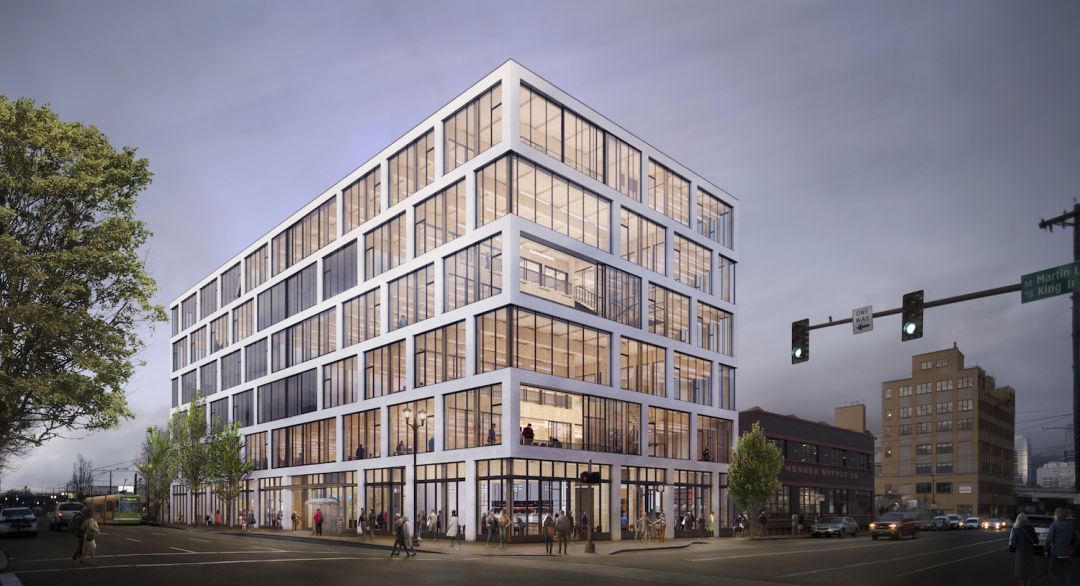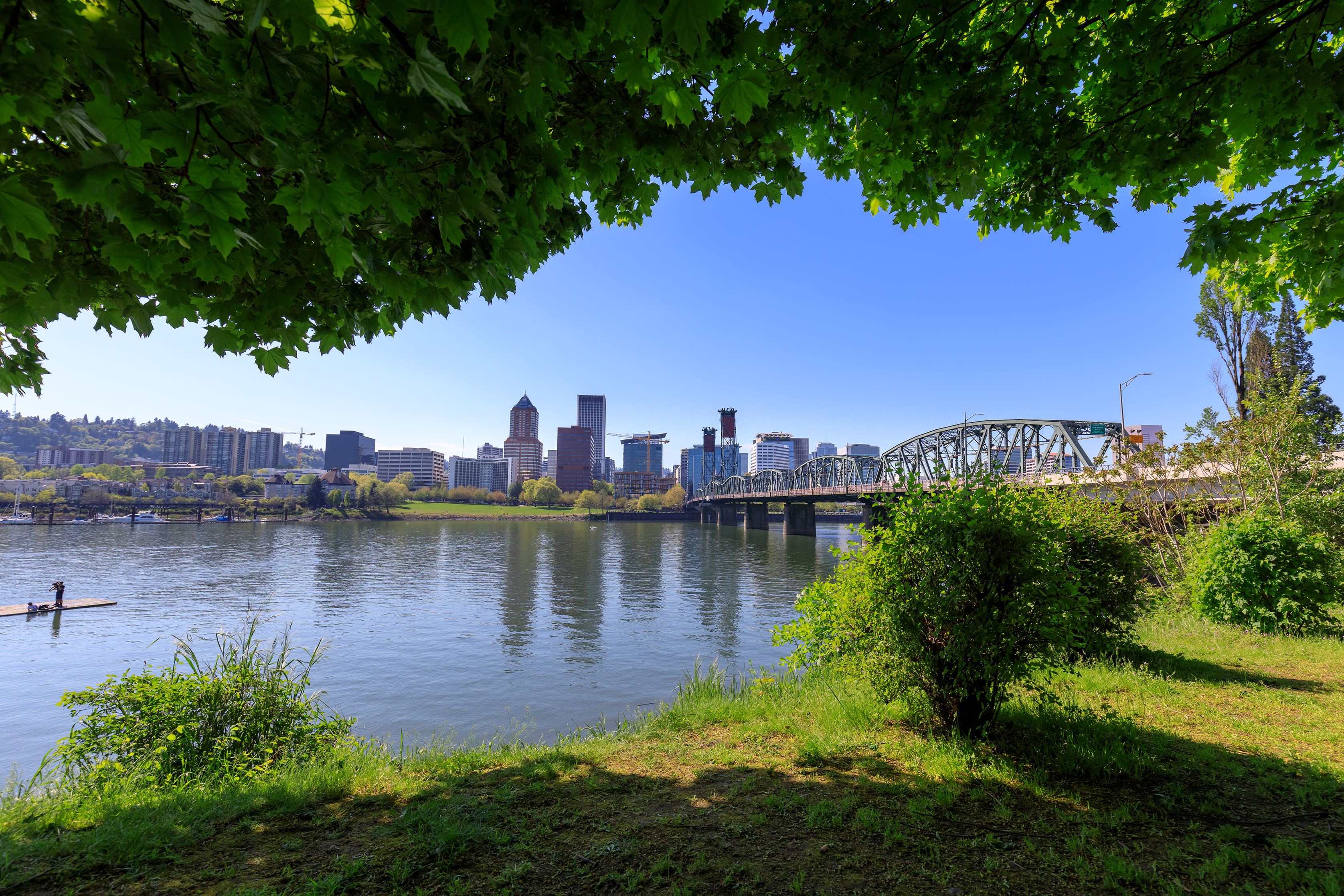This New Office Building Reflects a Booming Central Eastside

Image: Beam Development
Long gone are the days when the Central Eastside was little more than an industrial district. You can spot some of the most recent and notable developments in the heart of the Grand-Stark corridor at 525 SE Martin Luther King Jr. Boulevard. The former home for a Portland music company location is being transformed into a massive, six-story, cross-laminated timber building called District Office. Beam and Urban Development + Partners (UD+P) are partnering on the project, setting the completion date in late 2019.
The ground floor of the expansive structure hosts 9,500 square feet of retail space. Above that, five additional levels of naturally lit creative office spaces feature 12-foot ceilings. Tenants can either privatize or open up their workspace with 40-foot window-to-column clear spans, designed to optimize flexible layouts. Hacker Architects, which designed the project, will move its headquarters to the top floor.
“We wanted a design for office space to feel connected to the outdoors year-round,” Jessy Ledesma, director of development at Beam, says about the double height indoor-outdoor deck spaces.
District Office is also equipped with high-grade amenities, onsite parking, showers, lockers, and bike parking.
Jake Lancaster, managing director of JLL responsible for District Office leasing efforts, credits Beam Development as the catalyst for more than a decade of transformation in the Central Eastside, part of what makes this particular project possible.
“Development is really based on demand,” says Lancaster. “We’ve seen an in-migration of talents in this millennial class living and playing on the east side, and we’ve learned that they also want to work on the east side.”
With the maturing of the job market in the area, east-siders will expect to see more of these kinds of new office buildings.
“At a high level, development in the area will continue to make the area a diverse economy,” Lancaster says. “Having these diverse economies means creating higher diversity for economists in Portland for the long term.”
He adds, though, that these developments and designs don’t feel institutional in nature. With walking distance to more than 30 “landmark” bars and restaurants, he promises District Office will maintain the Portland aesthetic and culture that attracted people to the east side in the first place.




